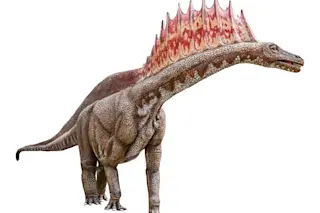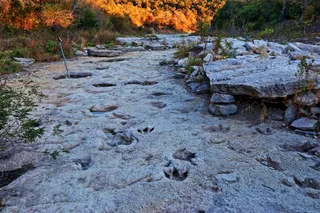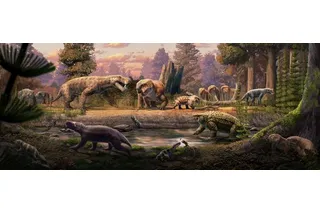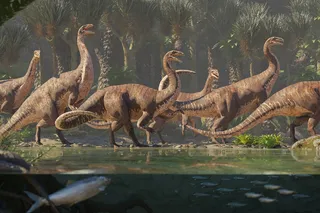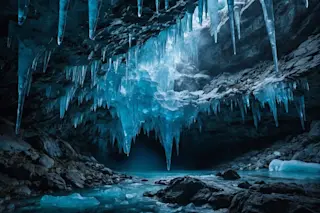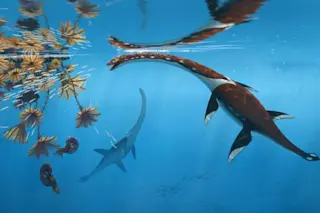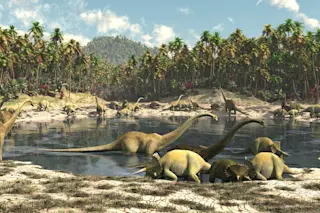The discovery of a new dinosaur, Tharosaurus indicus, in India is shaking up the study of a branch of sauropods, the long-necked, plant-eating group best known for brontosaurus. The find has also highlighted India’s growing status within paleontology, although the field continues to face many challenges in the country.
Fossils have been found around the world, with new species identified in Argentina, East Africa, China and the U.S. The discovery of a major one in India, now, greatly changes paleontology’s understanding of how these animals came about and radiated across the globe. T. indicus stands as the oldest dicraeosaurid ever found and also the oldest diplodocoid, a larger group of dinosaurs.
A Smaller Herbivore
Researchers discovered vertebrae belonging to T. indicus spread across about 270 square feet in the Thar Desert (aka “The Great Indian Desert”) of western India. Climatic changes created the desert, but the area wasn’t always so dry. At the time of T. indicus – some 167 million years ago – the region was much wetter and bordered on the former Tethys Ocean, now erased by continental drift.
T. indicus was a dicraeosaurid dinosaur, a smaller type of sauropod that nonetheless shared many of its larger siblings’ features. It had a long neck and tail, small skull and walked on all fours with its sturdy column-like legs. It also had spikes running down the back of its neck, a feature common to other dicraeosaurids, which mostly lived on the ancient continents of Africa and South America.
Read More: How Sauropods Evolved to Their Enormous Size
New Indian Fossil Discovery
According to the new paper, the new Indian fossil is likely “a relic of a lineage that originated in India and underwent rapid dispersal across the rest of Pangaea,” the ancient supercontinent.
T. indicus dates to the Middle Jurassic, while sauropods in general are believed to have originated sometime between the Late Triassic and the Early Jurassic. When and where neosauropods (the subgroup that includes dicraeosaurids) emerged remains a topic of debate.
Read More: How the Triassic Extinction Helped Dinosaurs Take Over the Planet
Paleontology in India
The new find is a victory for Indian paleontology, a field that faces many challenges in the South Asian country. According to The New York Times, India suffers from no shortage of dinosaur fossils to find, but it does lack the paleontologists needed to make the discoveries.
Other obstacles include dense forest cover (a barrier in other places around the world), unfriendly mining operations and insufficient funding.
Read More: Do We Still Have Any Species Today That Are Descendants of Dinosaurs?


